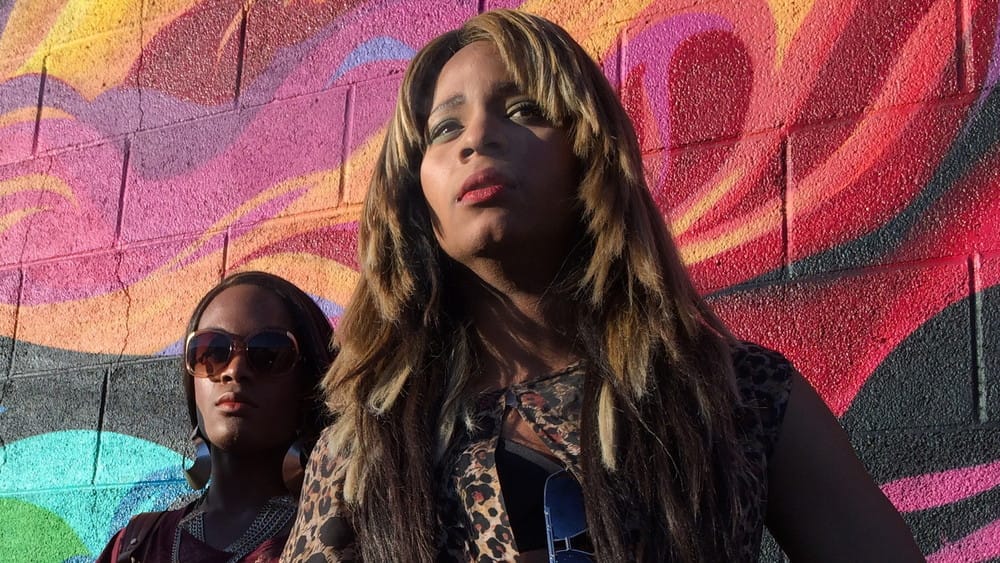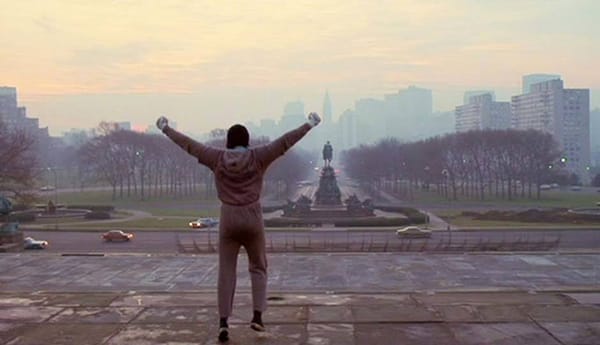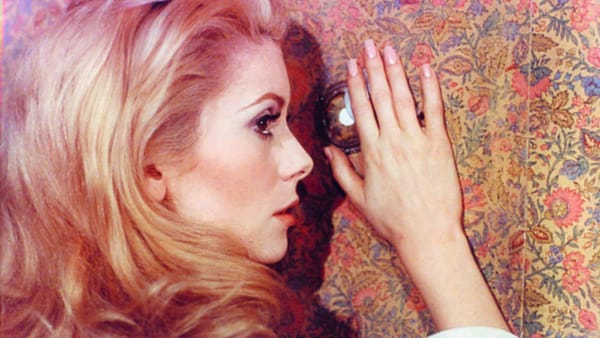Is Tangerine a tipping point for transgender representation?
As transgender rights become more prominent in popular culture, we are seeing an increasing momentum for films that break the binary

On 9th June 2014, American actor Laverne Cox became the first transgender person to appear on the cover of _Time _magazine. Statuesque in a deep blue dress, Cox’s face, framed by flowing tresses, stares deep into the viewer’s eyes; to her left, the title of the lead article is written – The Transgender Tipping Point: America’s Next Civil Rights Frontier; it is a direct challenge, a confrontation for those who stand in the way of trans rights.
And out of all who could lead the charge, Cox is an exemplary choice: best known for her portrayal of transgender inmate Sophia Burset in the wildly popular Netflix show Orange is the New Black, Cox has brought the issue of transgender representation to TVs, laptops, and tablet screens all over the globe. Her character is resilient, sympathetic, and – most importantly – a well-rounded representation of trans identity. In a cultural medium that prefers to deal in tropes, Cox isn’t just adding her view. She’s changing the conversation.
It seems Time is correct: transgender rights really are the next frontier, at least in America. With high profile transwomen like Janet Mock and Juliet Jacques encouraging transgender people to take control of their own narrative, it appears that we are waking up to trans issues. Of course, no discussion of the contemporary transgender landscape can be complete without a mention of Caitlyn Jenner, the former Olympian whose coming out earlier this year – to borrow a phrase most associated with her stepdaughter – broke the internet. Whether or not you agree with Jenner’s support for a Republican party that continues to be oblivious to trans rights, or believe that her narrative detracts from the experiences of low-income trans women of colour, it is clear that trans issues are entrenched in the limelight.
At least, this is how things seem at first sight. However, there is a world where transgender representation has been repeatedly mishandled: the world of cinema. Laverne Cox says ‘There’s not just one trans story. There’s not just one trans experience,’ and yet in terms of mainstream films we seem to be getting the same thing, over and over again. The first problem we can identify is that there is a severe dearth of films featuring transgender characters. GLAAD, a US-based organisation monitoring LGBT+ representation in media, regularly publishes its Studio Responsibility Index (SRI), which ranks the major motion picture studios in terms of representation. In 2013, only two films released by major studios featured transgender characters; in 2014, major studios released no films containing transgender characters. This lack of representation is obviously shocking, but it becomes even more of an issue when we consider the wider implications: 41% of trans people in America have attempted suicide, including Cox – ‘I went to the medicine cabinet and got a bottle of pills. And swallowed them. And went to sleep, hoping not to wake up’ she said in Time. One of the major triggers for this behaviour is a feeling of extreme isolation – the idea that no-one out there can understand what you’ve gone through. In light of these findings, the necessity of transgender narratives is obvious.
The necessity of transgender narratives is obvious
But then we have our second problem: many films and TV shows that do feature transgender characters feature them in a negative light. Another GLAAD report, looking into transgender representation on TV, found that out of transgender characters, 54% had a negative representation, 40% took on a victim role, and 21% were portrayed as killers. In contemporary cinema, transgender people often feature as the butt of a sexual joke, their existence used to undermine the masculinity and heteronormativity of the – inevitably white male – protagonist. Films such as The 40 Year Old Virgin and the Hangover series have used this trope, portraying transwomen as sexual tricksters, with the implication that transgender people are devious, conniving, and inherently undesirable.
Another alternative open to transgender characters is that of the psychotic killer; this trope has a long history, from Anthony Perkin’s cross-dressing killer in Psycho, through to the rampaging murderer in Sleepaway Camp and Cilian Murphy’s character in Peacock, who suffers from dissociative identity disorder. As transgender identity is associated with a sense of danger, the audience learns to fear trans individuals, both for their supposed ‘masking’ of their ‘true sex’, and for their homicidal tendencies.
Such a representation spills out from the cinemas and TV screens, and over to the law courts: ‘Trans Panic’ – the defence that use of excessive force, leading to assault or murder, is induced through the fear of being an object of transgender sexual advances – has now come into the legal lexicon. It was used in the case of Gwen Araujo, a transgender teenager who was beaten and strangled to death at the age of 17 after her gender identity was revealed; none of the three men involved were charged with murder. California has since banned the defence, but it is still possible to use it in America’s 49 other states. The grim reality is that transwomen have a one in twelve chance of being murdered in the US, a number that increases to one in eight for transwomen of colour. As long as transgender people are portrayed as either sexually deviant, a threat to masculinity, or a murderous force, things are unlikely to change.
Such a murder provided the material for perhaps the most well-known transgender film Boys Don’t Cry (1999): in 1993, Brandon Teena, a transman living in Nebraska, was raped and murdered after his gender identity was discovered. Hilary Swank – then a little-known actor – played Teena, and earned an Academy Award for her portrayal. Tender and moving, the film was described by critic Roger Ebert as ‘Romeo and Juliet set in a Nebraska trailer park’. The casting of Swank was also generally praised – since Teena had not been taking hormone replacement therapy, and had not undergone any surgery, choosing a female actor was a defendable choice.
There's an issue here: should trans characters be played by non-trans actors?
However, this is not always the case. In the last couple of years, numerous films have come under fire for casting cisgender actors as transgender characters, most notable Jean-Marc Vallée’s 2013 film Dallas Buyers Club, which centred around Ron Woodroof (Matthew McConaughey), a ultra-masc rodeo cowboy who contracts HIV. The casting of Jared Leto as Rayon, a drug-addicted, HIV-positive transwoman met with critical acclaim – he won an Academy Award for the portrayal – but also widespread condemnation from the trans community. The issue stems around whether trans characters, who are in such desperately short supply, should be portrayed by non-trans actors.
At a February 2014 screening Leto was heckled by an audience member; his reply was that if only trans actors are able to play trans characters, ‘you’ve made sure people that are gay, would never get the opportunity to turn the table, and explore part of that art.’ It is a similar defence used for whitewashing, the practice of taking parts that historically should be filled with minority actors, and using white actors instead, resulting in an ancient Egypt populated by Caucasians. But such a defence ignores the very real challenges faced by trans actors, who often only play trans roles; a survey by the Screen Actors Guild found that for LGBT+ actors, one third reported prejudice from directors, casting directors, and producers. When transgender actors are denied the opportunity to play cisgender roles, to deny them the chance to play transgender roles seems unfair.
In an interview with the Canadian Broadcasting Corporation, Vallée was asked if he’s ever considered hiring transgender actors for the part of Rayon; ‘never,’ he replied, before questioning whether such actors actually existed. Such comments, along with Vallée’s use of masculine pronouns to describe the character of Rayon all through publicity of the film, makes Leto’s casting seem, if not prejudiced, then at the very least misinformed.
Furthermore, the casting of trans actors can bring a much greater sense of realism to trans parts. As columnist Paris Lees wrote: ‘for truly accurate portrayals of trans people, cast trans actors’. As we can see with the case of Orange is the New Black, Laverne Cox has brought an extra sense of realism to the role that no amount of method acting could provide. While Leto’s performance in Dallas Buyer’s Club is brilliant, the characterisation of Rayon is completely two-dimensional. Steve Friess, writing in Time, said that ‘there is no stereotype about transgender women that Leto’s concoction does not tap’. Lees writes that ‘Rayon isn’t a person, she’s a function’, a statement it is difficult to disagree with, especially when Vallée stated ‘I am not aiming for the real thing. I am aiming for an experienced actor who wants to portray that thing.’ The ‘thing’ in question? A transgender character; a woman who has hopes, and dreams, and a lived reality like all of us.
Tangerine is an important, ground-breaking film
And this is why Tangerine, released two weeks ago,is such an important, ground-breaking film. Following two transgender sex workers roaming around the hell-hole of Downtown LA on Christmas Eve, Tangerine’s director Sean Baker cast two transwomen – Kitana Kiki Rodriguez and Mya Taylor – in the lead roles. The film is funny and lively, with Rodriguez and Taylor delivering rapid-fire dialogue that would put world-class rappers to shame; there are also moments of extreme beauty and serenity, such as when Taylor’s character gives Rodriguez’s character her own wig following a transphobic attack. The fact that the entire thing was shot on an iPhone (and not even the latest model) is not the most startling thing about it; instead it is the extreme reality that Rodriguez and Taylor’s performances bring to the screen that make us pause for thought. Here are two women who truly understand what the characters are going through, and carry nuances in their performances that make the idea of ever casting a non-trans actor as a trans role seem completely nonsensical. There is a campaign to get Rodriguez and Taylor nominated for the 2016 Academy Awards; modern entertainment, the world of cinema, and the rights of trans people across the world would be improved if they succeed.









